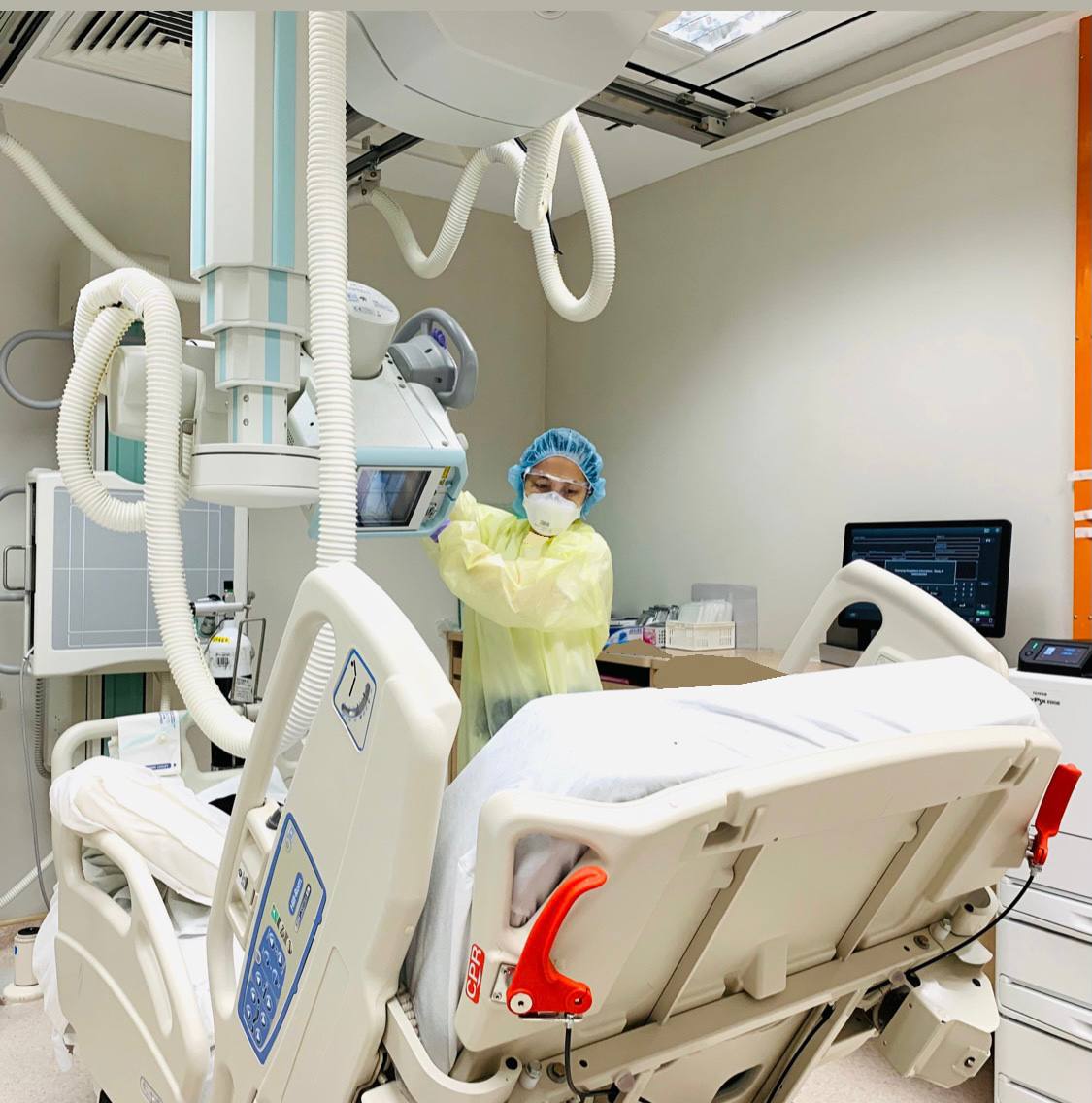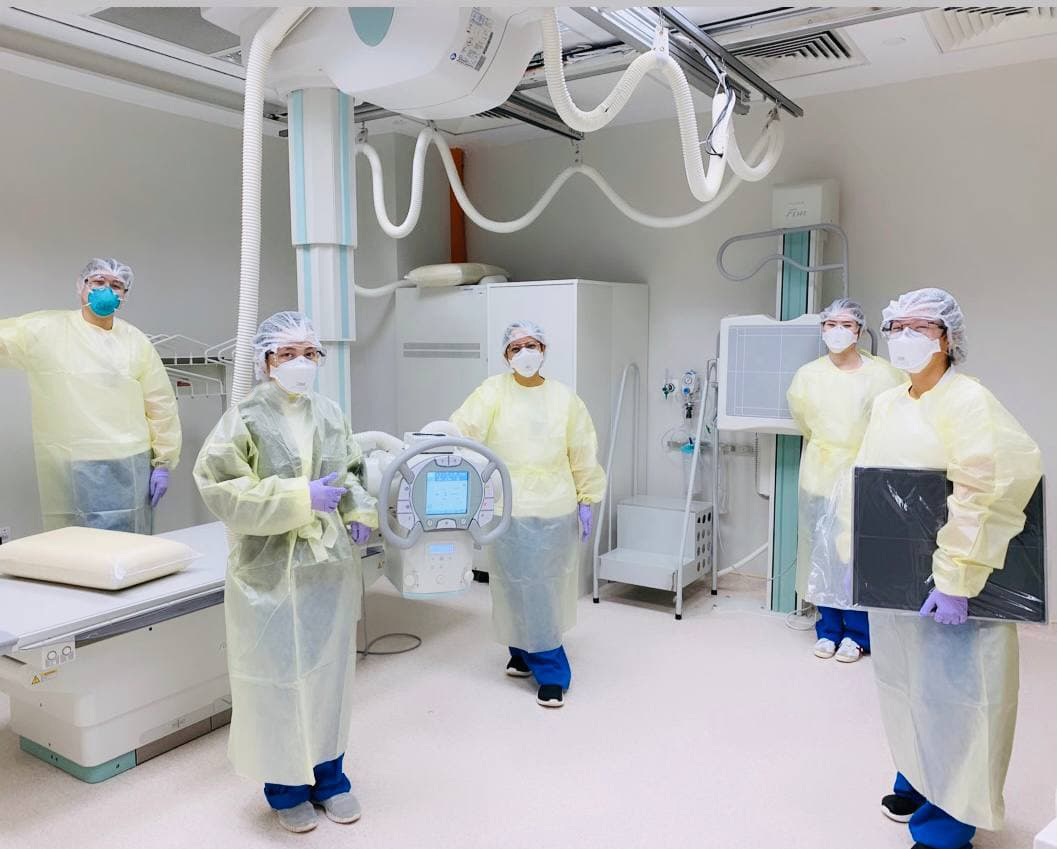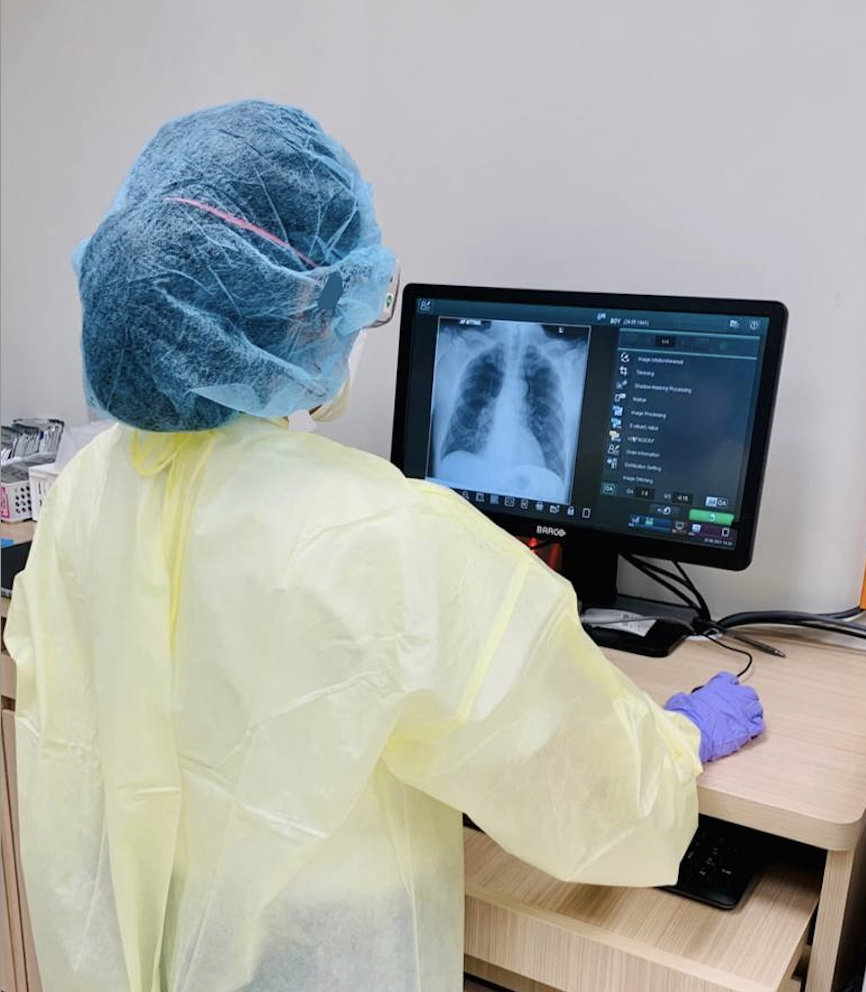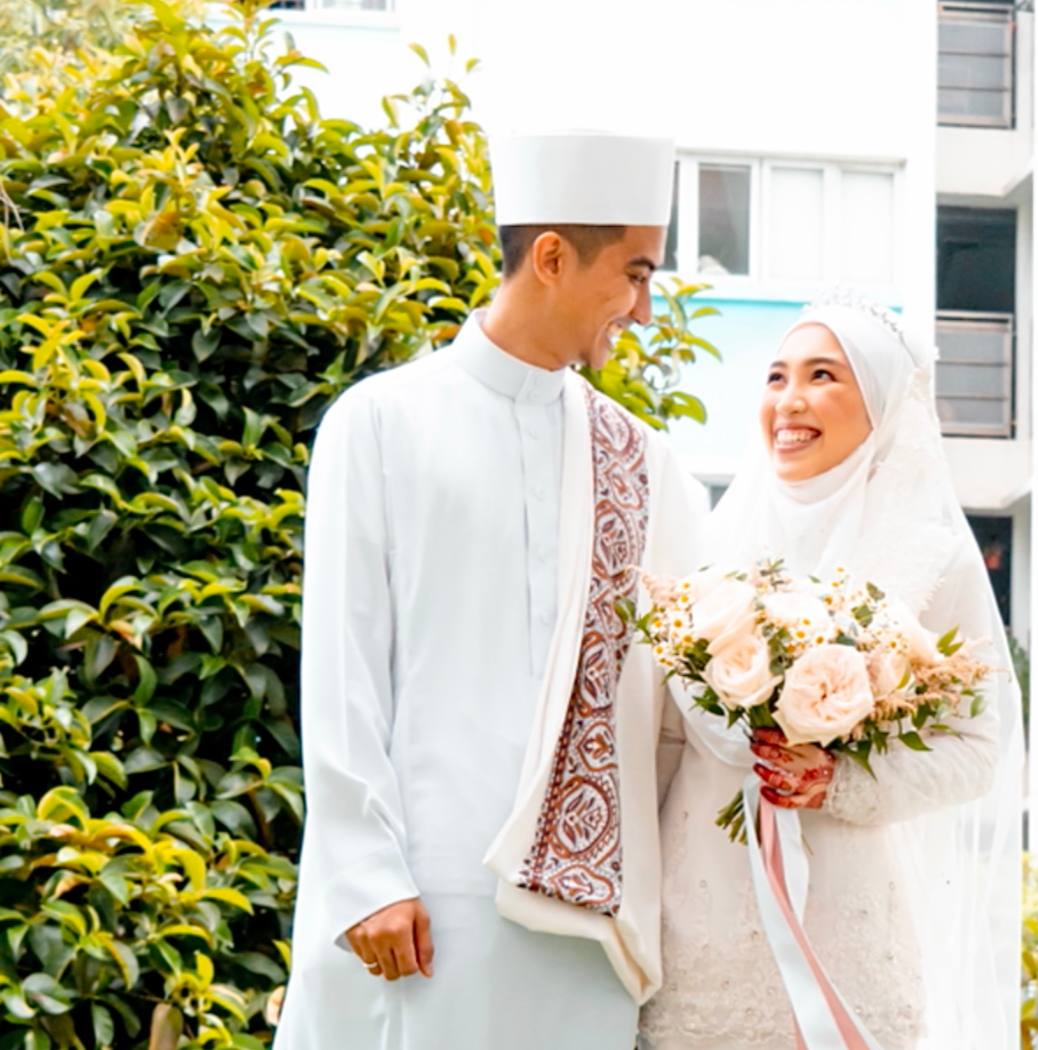Working in healthcare during Covid-19
Stories about frontline workers during the pandemic are aplenty – we see them all over the news, aired over the radio and reshared on social media. But hardly do we ever get a glimpse of what it’s truly like to work at the heart of the healthcare system during the pandemic.
When Covid-19 first hit, Sabrina, 24, was a fresh grad who’d barely just stepped out of university. A mere few months into work, she found herself frontlining the fight against the pandemic at Tan Tock Seng Hospital (TTSH) and the National Centre for Infectious Diseases (NCID).
From dealing with fasting during hectic shift work to planning a wedding, there’s plenty that healthcare workers face beyond what we already know. We spoke to Sabrina, and this is her story:
Note: Interview has been edited for length and clarity.
Dreamt of entering the medical field since childhood

Image credit: Sabrina
Sabrina: “I remember my parents speaking of the nobility of those working in the medical field when I was young. Ever since then, I had always pictured myself on the grounds of a hospital. Working as a health professional offers me the best opportunity to learn many valuable lessons while helping the sick.”
At the tail end of 2019, that childhood dream finally turned into reality when Sabrina stepped into the working world. Armed with her Bachelor of Science in Diagnostic Radiography, she was ready to start her job in Radiography, a career that combined her interests in physics with the fascinating intricacies of the human body.
She says, “Before starting work, I saw myself performing general X-ray procedures while rotating around the different patient settings, from outpatient and inpatient to emergency and operating theatres. By the end of two years, the goal was to progress into an area of specialisation.”
But as 2020 would have it, things didn’t quite go as imagined.
Singapore goes into pandemic mode
Sabrina: “Six months into work – [just as] I got myself familiarised with the hospital’s working environment and workflow – Singapore went into pandemic mode and TTSH-NCID, where I worked, was at the centre of it.”
Hospitals across Singapore started screening and triaging patients with acute respiratory infection (ARI) symptoms, which include cough and a sore throat. They also had to be on high alert for those with a fever particularly for incoming patients who had been to Covid-19 affected areas.
For Sabrina and her team, this meant an increase in workload as patients suspected to have Covid-19 now had to undergo chest X-rays.
The usual radiographer garb – a white coat or regular scrubs – was also quickly traded in for outbreak scrubs, which had to be cleaned by a dedicated laundry team, and full Personal Protective Equipment (PPE).

Image credit: Sabrina
“It took many of us a while to get used to wearing full PPE for long hours,” she recounts. “There are times when, even with the air-con, we can get sweaty, and my goggles will fog up until I can’t see anything.”
Coupled with a hectic work schedule, the discomforts of PPE can quickly lead to exhaustion. To manage that, shift leaders would often encourage staff to take short breaks and drink up to ensure that they’re feeling well enough to continue working.
Working in the heart of the pandemic
As Covid-19 continued to descend chaos onto the world, frontliners had to start finding ways to embrace the barrage of changes coming in from all directions. After the initial wave of pandemic in 2020 came the new Delta variant which sparked a cluster in a TTSH ward in May this year.
Sabrina: “I was at the outpatient ultrasound imaging suite in TTSH undergoing my training in performing ultrasound scans when it happened. Changes in protocols cascaded down quickly.”
Colleagues who had been in close contact with Covid-19 infected staff and patients were placed on immediate leave of absence. Non-urgent clinic appointments also had to be rescheduled as part of the hospital’s containment measures.

Image adapted from: Sabrina
In a whirlwind of events, she was eventually rostered to NCID, which needed more manpower to support operations. Performing chest X-rays on Covid-19 infected patients was soon her main role, alongside running a miscellany of tasks like coordinating and scheduling patients’ movements.
“One of the purposes of chest X-rays is to detect infective changes through the radiological appearance of the organs such as the lungs,” she explains.
While apprehensive about the stint there at first, Sabrina soon found joy in learning from her sonographer colleagues on the job. “Every opportunity is a chance to learn,” she quips and shares that the experience brought fresh avenues to hone her skills in new areas like ultrasound modality.
At her own time, she also studied ultrasound images and scans, discussing them with seniors who took the time out of their day to guide her and share various learning resources.
The hidden struggles of frontline workers
But of course, as the pandemic spread in Singapore, the ripple effect of its consequences soon manifested in areas beyond immediate health risks and tweaks in workplace arrangements.
Ramadan posed one of the greatest struggles for Sabrina as the practice of fasting is much more challenging when one is gowned head to toe in sweaty PPE and working odd hours.
“We slowly adjusted to it. During the earlier days of Covid-19 last year, I recall having to adjust my mealtime, with an earlier pre-dawn meal at 2AM during my night shift instead of my usual 5AM to ensure that scheduled morning cases are done on time,” she says. “My colleagues were understanding, and they checked in on me time-to-time to ensure that I was doing fine. The hospital also catered meals for staff on duty.”
While festive occasions are supposed to be spent with family, Sabrina also found herself spending the Hari Raya period alone in her alternative accommodation for the safety of her family.
At home, Sabrina strictly adheres to the hospital’s infection control protocols and ensures she washes her hands and showers immediately as soon as she gets back. Despite that, the nagging worry over compromising her family’s safety with her higher risk of exposure is always at the back of her mind.
“It was tough being away from my family during the Hari Raya festive period,” she shares. Messages and photos from her family and loved ones provided some form of comfort, to keep her going through feelings of isolation and loneliness.

Image credit: Shamsydar
June 2021 also marked Sabrina’s calendar with a massive milestone: her wedding with the love of her life. Yet, the outlook of having a proper ceremony was bleak. Like many other couples who decided to go ahead with a wedding during this period, she was planning her big day with the restrictions from Phase 2 Heightened Alert hot on their heels.
Plans, such as organising a proper wedding reception, had to either be scrapped or changed due to the ever-changing guidelines. During her free time, half her mind was always keeping track of government regulations, while the other half was spent wondering if she’d even be able to take time off work for her wedding amid the pandemic’s second wave.
Eventually, against the odds, she managed to have a small solemnisation ceremony with her fiancé. Despite the jumble of plans and emotions, she was just glad to have been able to get through it all with blessings from her loved ones.
Silver linings along the way
While life during the pandemic wasn’t always rainbows and sunshine, Sabrina recounts that things weren’t always gloomy during difficult times: “One incident that stood out was [when I had to] quickly switch from speaking in English to different languages for three different patients in an NCID ward within 10 minutes.”
We spoke in simple Tamil, Bengali and other languages to instruct the patients to breathe in and hold for the X-ray. When it came to a Bangladeshi patient, I said ‘donabad’, to thank the patient in Bengali. I was expecting a nod or a thank you, but to my surprise, the patient responded with a clear ‘xie xie ni’. I laughed and gave him a thumbs up.
It made me realise that the little things can make working fun, and things don’t always have to be stressful.”
With every dark cloud – even one as dark as the pandemic – there is a silver lining; above all, she’s grateful for the love she’s received throughout the last year and a half.
“I [stand] by my job because my parents often remind me of how proud they are of what I am doing. Their words of encouragement and their reminder of the great learning opportunity being at the forefront in this pandemic brings is one of my biggest drives to stay on.”
Grab drivers, patients, friends and family have all shown their support as well. Her colleagues at the hospital have also been a pillar of strength, and seniors at work have been more than happy to guide her and other fresh hires through the various processes that came their way.
Goodwill messages and donations from the public have been pouring into the hospital, and these truly warm the hearts and motivate healthcare workers to keep doing what they’re doing.
Being a frontliner during the pandemic
Aside from expanding her clinical skills, Sabrina says the journey so far has also allowed her to learn all sorts of life lessons, from patience when dealing with difficult patients to courage in facing uncertainties of any kind.
But it doesn’t have to only be during a pandemic that we grow as a community, she adds. You don’t need enhanced measures and strict protocols to develop skills like strength and patience. On any other day, we still can learn from the people we interact with, like our colleagues, friends and family.
Looking back now, she says, “The thought of rendering my service and doing my part for the community remains very meaningful. It’s an achievement I will hold dearly to for a lifetime and [is] an accomplishment worth sharing with the future generation. We have already been in this situation for a year and a half, and I hope that the public can continue to support us in the work we do.”
For more articles on healthcare workers and other Covid-19 perspectives:
- This frontline nurse works with young patients with no regrets
- Practical ways to show support to frontline workers
- 3 Singaporeans On Missing Life’s Milestones Due To Covid-19
- Being pregnant during the pandemic
- Dealing with insomnia during Covid
Cover image adapted from: Sabrina, Shamsydar
